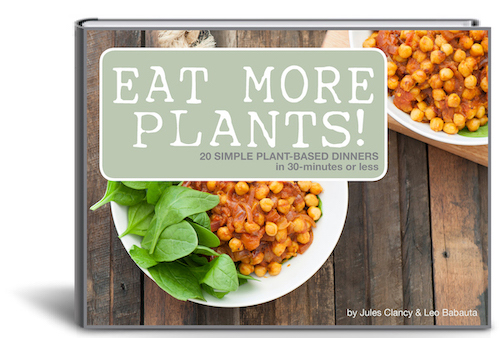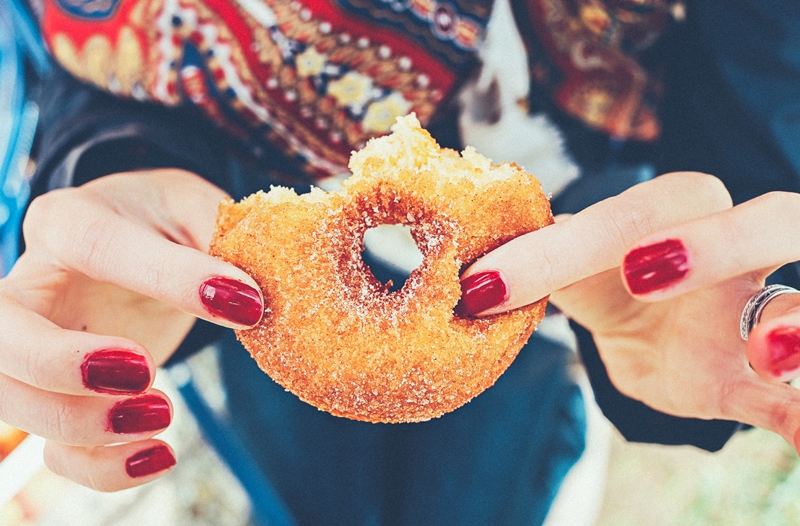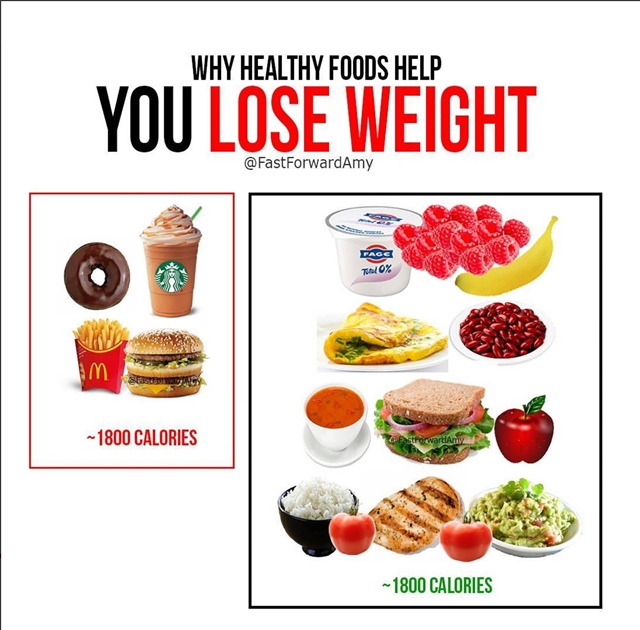Source http://feedproxy.google.com/~r/tinybuddha/~3/hexv3Yqpy04/

“The root of suffering is attachment.” ~The Buddha
Getting dumped a few weeks before my wedding was the most painful experience of my life to date, but how I came through it is the single proudest moment of my life.
When I met with his mother four years after the breakup, she said she’d felt so guilty over these past few years. “I loved you like a daughter, and he’s my son—I never want any of my children to feel that pain.”
I told her I was glad it happened, not for the fact that the breakup needed to happen (was inevitable even), but to have experienced the pain and loss, to confront my then-unconscious fear of failure straight on, and to not only survive, but thrive as a result.
I told her I look forward to failing now. More accurately, I appreciate the lessons learned and the growth I’ll only be able to experience by getting back up, dusting myself off, humbly reflecting on where I went wrong, and pushing forward with a more finely tuned compass.
But that perspective didn’t come easily. It took crawling Andy Dufresne-style through 500 metaphorical yards of sh*t-filled sewage pipes first.
We were together for eight years through our twenties and into our early thirties. Four years in, we got engaged.
One month before the wedding I went from bliss to being sucker punched in the lower intestines (emotionally speaking).
It was a Tuesday. This was two days after coming home from one of the most incredible experiences of my life. I’d just finished yoga teacher training at an eight-day intensive on Long Island, Maine.
It was a perfect week. I came home still buzzing with blissful vibes and gratitude. When he said we needed to talk, my stomach dropped so hard and so fast I thought it would fall out of me.
He said he didn’t want to get married anymore.
The contrast and transition from high to low was dizzying. In one week I felt both the best and worst I’d ever felt in my life.
The following months were comprised of uncontrollable crying, deep sorrow, and some of the greatest lessons I’ve ever learned.
Reading the stories of others who have loved and lost were so helpful to me when I was in pain, as were the bite-sized inspirational quotes from great and kind minds that I could carry with me through the day, so I’ve included those that helped me the most. It made me feel connected and not alone; it gave me hope knowing there is light at the end of the tunnel.
That’s why I’m writing this. To share what I learned through this whole ordeal, how it set me off on a path of self-discovery and development, and how I’m a smarter, stronger, and more compassionate person because of it. The same is possible for you.
I learned to feel my feelings.
“The best way out is always through.” ~Robert Frost
Sounds simple enough, but it’s not something we consciously do on purpose with negative emotions.
We still lived together for three months after the wedding was broken off. It was especially hard coming home from work knowing he’d be there.
Toward the end I’d gotten pretty good at avoiding, numbing, and running from experiencing the full intensity of the pain. The day he moved out, I decided it was time to feel it, all of it.
I closed my eyes and let go of every resistance to the pain. I let the full force of it wash over me and through me. I accepted the pain without judgement, like I was both experiencing the pain and watching myself experience the pain.
I did this through dancing in my kitchen. It seemed to help move the emotions through me. And it left me in a literal and figurative puddle of tears on the cold tile floor. It was incredibly cathartic.
We avoid the full intensity of afflictive emotions because it seems like the crushing wave of feeling will not only knock us over but drag us down and drown us in sorrow and anguish. It feels like the pain might kill us or drive us insane, so we hide from it at all costs.
It makes sense—we’re built to seek pleasure and avoid pain. Of course we want to run away from it.
But when it comes down to it, emotions are energy and energy needs to flow. If it’s blocked, it gets stuck; it doesn’t leave.
Emotions are sensational representations of our thoughts. Breathe. Witness. Let the emotions flow and instead of judging them as bad or hating the process. View it through a lens of curiosity.
You really can’t rush the process of healing. It takes time. But avoiding the feelings or numbing them with wine, pot, pills, TV, food, sex (or all of the above like I did for months) only drags the grieving process out longer.
Not to say those aversion techniques should be completely avoided through the whole process—you do you. Just be aware that you’ll eventually need to face the emotions head on.
I fully believe that had I not had the courage that day to feel the pain with all its intensity my healing would have taken much longer.
Resisting the emotions is like trying to pull your fingers out of a Chinese finger trap. You only get stuck more. You need to lean into it to set yourself free.
And now when I’m faced with challenges that stir up difficult emotions, I’m much braver and allow myself to feel it and experience it, then I’m in a much better place to question and reframe my beliefs around the situation.
I learned how to reframe a difficult situation.
“How lucky I am to have something that makes saying goodbye so hard.” ~Winnie the Pooh
Reframing is a powerful tool. When we’re in the thick of an emotion we identify with it so strongly that it’s hard to step back and take an objective look from all sides.
One day at work, probably a month after the canceled nuptials, I was rather unsuccessfully fighting back tears in the bathroom when a woman I work with came in and asked me what was up. I told her the situation and she put things into perspective for me.
She’d met the man of her dreams in her forties and got married later than most. He was a talented doctor. Shortly after getting married he started showing signs of Alzheimer’s. A few years later she had to place him in a full-time facility near home.
In the bathroom she said to me, “At least you don’t have to watch him suffer.” She was right, and that was exactly what I needed to hear. My situation could have been so much worse. How lucky am I?
Now when dealing with a situation that makes me feel angry, sad, irritated, guilty or ashamed, I step back and try to reframe the situation. I’ll ask myself questions like:
- Is it true?
- What is the story I’m telling myself here? What do I think this means about me?
- If the universe gave me this situation on purpose, what lesson am I supposed to be learning?
- What’s the worst that could happen?
- If the worst does happen, how can I cope?
- Can I know for sure that this “shouldn’t” have happened?
I learned to know my values and to live in tune with them.
“Open your arms to change but don’t let go of your values.” ~Dalai Lama
He’d said we shouldn’t get married because he didn’t want to have children, and I did. So I said, “Maybe I don’t want to have kids. I don’t have to have kids.” I didn’t truly believe this; I was grasping at straws, trying to keep hope alive.
We lived together still, and since he hadn’t technically broken up with me yet (he only said he didn’t want to get married) we agreed to try to work it out.
Then I snooped. I’m embarrassed to admit it, but I took his phone when he was out of the room and looked through his personal, private messages on a hunch. The punishment for this breach of privacy was yet another figurative sucker punch to the gut.
I saw the text exchanges with another woman on his phone. And the pictures.
It was dishonest to invade his privacy, and karma was quick to level the playing field. I learned my lesson immediately because what I saw hurt—a lot. Needless to say, I’m off of snooping for good.
When I said I didn’t have to have children, it wasn’t true and deep down I knew that. And I felt so dirty and wrong for looking at his phone when I knew outright it was an invasion of privacy, regardless of the fact that I found questionable material.
These are what we call values conflicts. Through making these mistakes I learned to identify what my values are, and to recognize when there is a conflict either caused by my own thoughts and actions, or by others.
Knowing your values is like having a brighter flashlight to get you through the woods at night. Sure, you might make it out without a light, but you’ll likely trip or wander off path. Knowing your core values in life is a guiding light to making tough decisions with confidence and clarity.
And I value honesty, kindness, integrity and authenticity. Four things I did not live up to in those moments.
I learned the power and freedom of forgiveness.
“Holding on to anger is like grasping a hot coal with the intent of throwing it at someone else; you are the one who gets burned.” ~Buddha (paraphrased)
On paper I had reasons to be angry. To this day I could hold a grudge still, and many would say it was justifiable.
To be frank, that sounds exhausting to me. I certainly was angry for months. It’s only natural; it was part of my grieving process.
But I came to realize that the anger felt terrible inside me. My ego was holding onto the idea that I am right and he is wrong. I asked myself “So what?” “Where is the benefit of holding onto this?” I had no answer.
This was a person who was very important to me for a long time. I wished him well then, why should I stop now that we aren’t together?
Everyone makes mistakes. I had to make my own mistakes (so, so many of them) to finally understand what my mother had always said: “Everyone is doing the best they can with what they have.”
And I believe that to be true. When I looked at his phone, though it was wrong, I was still doing the best I could with what I had. I had pain and a strong desire to find the “real” reason for it. I had opportunity when he was out of the room. I had strong curiosity. I had a lack of restraint.
I needed to forgive myself. I made mistakes, admitted them, and learned from them. At that point they’d run their course and it was time to forgive.
Plus, since I know kindness is a core value of mine, I need to live according to my values. Holding onto anger is not being kind to myself.
And I can full heartedly say I forgive every wrongdoing by him. He’s human and makes mistakes just like me.
I learned how to rethink “failure.”
“The greatest glory in living lies not in never falling, but in rising every time we fall.” ~Ralph Waldo Emerson
In retrospect, I realized I wanted the breakup. I’d sometimes imagine him leaving me or—on my more dramatic and theatrical days—that he died and I had to start again.
I came to learn that I was afraid of ending the relationship because it would have meant that I failed. I’d accepted an engagement proposal. I’d spent eight years living with this person making a life together. I’d planned a wedding. I’d made deposits.
To then say it was a mistake, that I’d changed my mind, would mean that I failed. I didn’t realize at the time, but I had a huge fear of disappointing my parents and was afraid to call them and let them know about this transgression.
I never stopped to define failure and what it means to me. At the time I would have said it meant to make a mistake, to not reach your goal, to fall short, to not be good enough.
With further introspection, I’ve since redefined what failure means to me. Because I learned so much from this failure of a relationship, I now have a new perspective.
Failure to me now means giving up on something I want because it seems hard or uncomfortable. It means not trying because of fear.
I go back to my reframing tool and ask the following:
- What’s the worst that could happen?
- How likely is that outcome?
- If the worst happens, how will I cope?
- What’s the best that could happen?
- How likely is that to happen?
- What probably will happen?
We fear the unknown, the ambiguous. Define what you’re afraid of. It’s much less scary on paper. And now you have the opportunity to plan, problem-solve, and prepare.
I’ve never been more accepting of my emotions and tolerant of pain since this experience. This journey and everything I’ve learned has led me to be my happiest me.
Not to say I’ve reached the end of my journey. The best part is there is always room for more growth, learning, compassion, love, and happiness. And I feel blessed that I have the opportunity to pursue it every day.
Once I got a taste of self-improvement, I was hooked. I started to see that happiness—true happiness—and freedom from the control of emotions, of feeling not good enough, from constant worry, were all attainable.
This experience was a blessing. A painful, messy, crash course in learning to navigate life’s difficulties with grace and resilience.
![]()
About Sandra Woznicki
Sandy is a stress and anxiety coach helping women who deep down don’t feel good enough, suffer from their inner bully, and can’t let go of worry. Her coaching and free resources like the Stress Detox Course help women to live more fully and freely. She’s happily married to her goofy husband and loves connecting with nature in beautiful Maine.
Get in the conversation! Click here to leave a comment on the site.
The post How Getting Dumped Before My Wedding Made Me a Better Person appeared first on Tiny Buddha.


